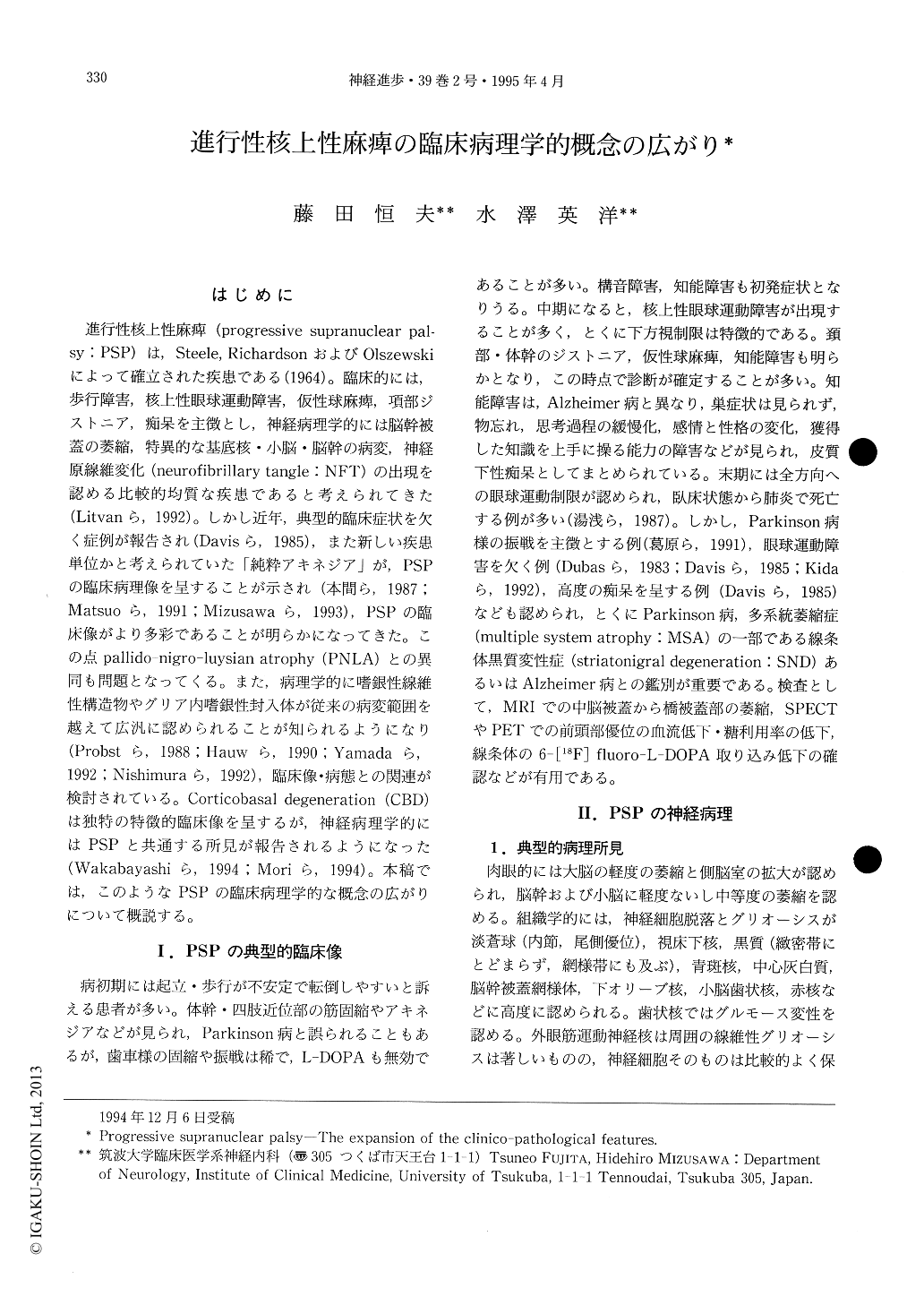Japanese
English
- 有料閲覧
- Abstract 文献概要
- 1ページ目 Look Inside
はじめに
進行性核上性麻痺(progressive supranuclear palsy:PSP)は,Steele,RichardsonおよびOlszewskiによって確立された疾患である(1964)。臨床的には,歩行障害,核上性眼球運動障害,仮性球麻痺,項部ジストニア,痴呆を主徴とし,神経病理学的には脳幹被蓋の萎縮,特異的な基底核・小脳・脳幹の病変,神経原線維変化(neurofibrillary tangle:NFT)の出現を認める比較的均質な疾患であると考えられてきた(Litvanら,1992)。しかし近年,典型的臨床症状を欠く症例が報告され(Davisら,1985),また新しい疾患単位かと考えられていた「純粋アキネジア」が,PSPの臨床病理像を呈することが示され(本間ら,1987;Matsuoら,1991;Mizusawaら,1993),PSPの臨床像がより多彩であることが明らかになってきた。この点pallido-nigro-luysian atrophy(PNLA)との異同も問題となってくる。
Progressive supranuclear palsy (PSP) was first reported by Steele, et al (1964), characterized by supranuclear ophthalmoplegia, pseudobulbar palsy, dysarthria, dystonic rigidity of the neck and upper trunk, and dementia. Neuropathological investigations revealed the presence of neuronal loss, gliosis, and neurofibrillary tangles in the globus pallidus, subthalamic nucleus, substantia nigra, superior colliculi, pons, and dentate nucleus.

Copyright © 1995, Igaku-Shoin Ltd. All rights reserved.


